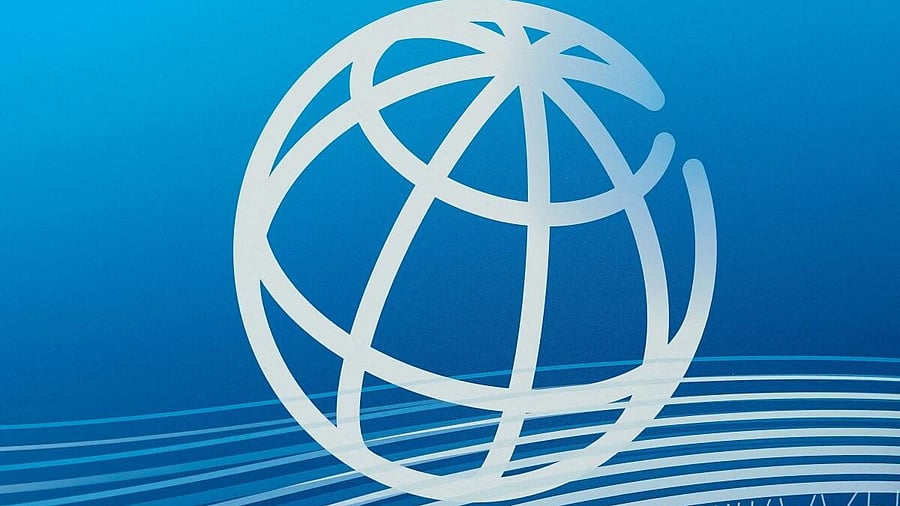
The World Bank logo.
Credit: Reuters File Photo
The World Bank on Tuesday raised India’s economic growth forecast for the current financial year to 6.5% from its earlier estimate of 6.3% announced in June, but trimmed 2026-27 projection by 20 basis points citing steeper-than-expected US tariffs.
In its biannual South Asia Development update, the World Bank noted that “India is expected to remain the world’s fastest-growing major economy, underpinned by continued strength in consumption growth.”
“Domestic conditions, particularly agricultural output and rural wage growth, have been better than expected. The government’s reforms to the Goods and Services Tax (GST)—reducing the number of tax brackets and simplifying compliance—are expected to support activity," it said.
However, the multilateral lender cautioned that the higher-than-expected tariffs imposed by the US President Donald Trump administration would hit India’s growth.
“India was initially expected to face lower US tariffs than its competitors in April, but by the end of August, it was subject to significantly higher duties," the report noted.
For the financial year 2026-27, the World Bank has lowered India’s growth projection to 6.3% from its earlier estimate of 6.5% announced in June. The World Bank said that higher US tariffs would weigh on India’s exports.
The World Bank’s upgrade on India’s growth projection for the current financial year comes after better-than-expected numbers for April-June quarter. India’s gross domestic product (GDP) growth accelerated to 7.8% in the quarter ended June 30, as per the latest official data.
Several agencies have revised their projections on India’s GDP growth following the better-than-expected Q1 data and rollout of GST rate rationalisation, which is expected to significantly boost consumption.
Last week, the Reserve Bank of India (RBI) revised its projection upward from 6.5% to 6.8%. The Asian Development Bank (ADB) has pegged India’s GDP growth projection at 6.5% for both the current financial year and 2026-27.
According to the World Bank, the US tariff will drag down the average growth of South Asia to 5.8% in 2026 from the projected 6.6% in 2025. India accounts for nearly 70% of South Asia’s total economic output.
Bangladesh is projected to grow at 4.8% in 2025-26 and 6.3% in 2026-27; Nepal at 2.1% and 4.7%; Sri Lanka at 3.5% and 3.1%; Bhutan at 7.3% and 6.1%; and the Maldives at 3.9% and 4%, respectively.
The World Bank noted that India is expected to be the world’s fastest-growing source of energy demand in the medium term and surpass China to become the single largest source of energy demand by 2050.
Underlining the regional disparity, the World Bank noted; “There are two economies in South Asia— There are two economies in South Asia—a less productive traditional one and a dynamic, a less productive traditional one and a dynamic modern one. Most people work in the first one, but South Asia will better achieve its ambitions if more shift to the second one. Lowering tariffs and leveraging artificial intelligence can help.”
WTO downgrades global trade growth forecast to 0.5% for next year
GENEVA, Reuters: The World Trade Organization sharply lowered its 2026 forecast for global merchandise trade volume growth to 0.5% on Tuesday, citing expected delayed impacts from U.S. President Donald Trump’s tariffs.
It marks a significant revision down from its previous estimate in August of 1.8% growth.
“The outlook for next year is bleaker ... I am very concerned,” Director-General Ngozi Okonjo-Iweala told reporters in Geneva.
However, she said the world trading system is showing resilience, with the rules-based multilateral system providing some stability amid trade turmoil.
For 2025, the WTO upgraded its forecast for global trade volume growth to2.4%, from 0.9% previously, driven primarily by the front-loading of imports into the United States ahead of tariff hikes and growth in the trade of AI-related goods. It is still below the 2.8% growth seen in 2024.